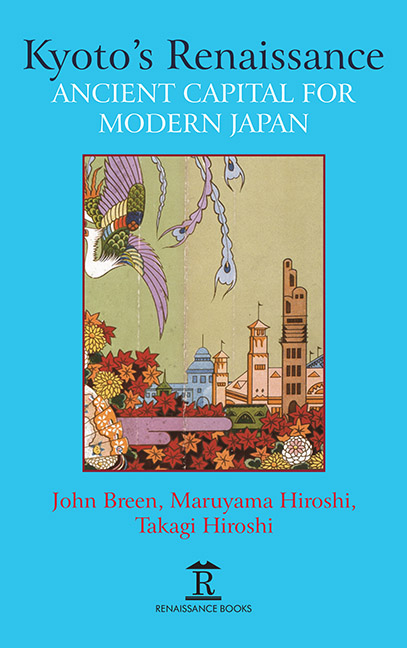Chapter 2 - Performing History: Festivals and Pageants in the Making of Modern Kyoto
Published online by Cambridge University Press: 30 April 2022
Summary
IN NOVEMBER 1915, the man known to history as Emperor Taisho underwent his enthronement rites in the halls and pavilions of the Kyoto Imperial Palace. These were extraordinary events. They transformed the man into a modern monarch, investing him with cosmic as well as earthly powers. It could be argued that these rites constituted the first truly national, ritual performance in Japanese history. It is ironic, then, that they took place not in the nation's capital of Tokyo, but in Kyoto. For the sevenday sequence of enthronement events, Kyoto was once more Japan's vital imperial center, as it had been until the Restoration of 1868. Kyoto's staging of the emperor's enthronement rites marked the triumphant climax of a festive strategy intended to restore meaning to the modern city of Kyoto. The origins of this strategy can be traced back to the 1880s, and to a very specific vision articulated by ex-courtier and modern statesman, Iwakura Tomomi (1825–83). Well before 1915, the fruits of that strategy had become elsewhere evident. Kyoto was already marketing itself as a city of “three great festivals” (sandai matsuri). The Aoi Festival in May, the Gion Festival in July and the Jidai Festival in October, were those festivals, and by now they had all acquired renown far beyond Kyoto's city limits; these events were frequently graced by the presence of imperial princes, foreign dignitaries and citizens from far and wide.
Festivals’ dynamic role in the making of towns and cities in postwar Japan is well known, and much discussed in both English and Japanese. The work by Ashkenazi, Kawano, Roberston, and Schnell comes to mind. This work was preceded by ground breaking work in Japanese, such as that by Yoneyama Toshinao. Kyoto was pioneering in terms of festive strategy, and here I explore the dynamic workings of the strategy to argue that festivals were indeed vital to the renaissance of Kyoto in the aftermath of the Restoration. The theoretical point to stress is that festivals and rites are types of performance, and as such they are always strategic ways of acting. They involve multiple agents as designers, producers, actors and spectators, and multiple agendas.
- Type
- Chapter
- Information
- Kyoto's RenaissanceAncient Capital for Modern Japan, pp. 33 - 64Publisher: Amsterdam University PressPrint publication year: 2020

